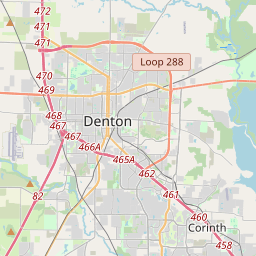Cooper Creek Cemetery
Historical marker location:






This burial ground is one of the last remaining remnants of a small rural community that dates back to before the Civil War. Settlers, including the Farris and Skaggs families, came to northeast Denton County in the 1860s. Like many rural areas, as the number of farms grew, the community found the need to establish a cemetery, school, and churches. A deed from 1878 evidences the establishment of the Cooper Creek Cemetery on this site.
The graves in Cooper Creek Cemetery chronicle the history of the community. The earliest marked grave is of Richard Kale, who died February 9, 1872. Local residents, civic leaders and early settlers are buried in the cemetery. Cooper Creek School’s first trustees, James Farris, J.A. Templeton, and David Argo, are buried here. The cemetery also includes veterans of war. David Payne, who served in the 29th Texas Cavalry during the Civil War, and Lieutenant L.H. Owen, an Air Medal and Oak Cluster recipient of World War II, are both honored here. Unlike many cemeteries, the Cooper Creek Cemetery is not segregated by race or religion. The graves of Hispanic residents, such as Tiburcio Menchaca and the Villanueva family, lie close to their Anglo neighbors.
Cooper Creek Community has taken much pride in overseeing the cemetery for more than a hundred years. Residents have preserved important features of the cemetery, such as fencing and concrete curbing around family plots, through decoration days and fundraisers. Today, the Cooper Creek Cemetery Association cares for and maintains the cemetery, which continues to serve area residents
As one of the most visible programs of the Texas Historical Commission (THC), historical markers commemorate diverse topics in Texas history, including: the history and architecture of houses, commercial and public buildings, religious congregations, and military sites; events that changed the course of local and state history; and individuals who have made lasting contributions to the state, community organizations, and businesses.
The Johnson Space Center, located in Houston, played a crucial role in the development of the U.S. space program. It was here that NASA trained its astronauts and mission control teams, and it continues to be an important center for space research and exploration today.
Denton County was officially established in 1846 and named after John B. Denton, a prominent figure in Texas history. The county played a significant role in the early days of Texas statehood and witnessed the challenges and triumphs of westward expansion.
Throughout the 19th century, Denton County thrived due to the expansion of railroads and the arrival of new settlers. Agriculture, particularly the production of cotton, became a key economic driver. Educational institutions, such as the University of North Texas and Texas Woman's University, were founded in Denton County during this period, establishing a legacy of academic excellence.
In the 20th century, Denton County continued to evolve. The discovery of oil in the area brought new economic opportunities, and the county experienced further growth and urbanization. Today, Denton County is a dynamic and thriving region with a diverse economy that includes sectors such as education, healthcare, technology, and manufacturing.
Denton County Timeline
This timeline provides a glimpse into the major events and milestones that have shaped the history of Denton County, Texas.
Native American Inhabitation: Before European settlement, Denton County was home to various Native American tribes, including the Wichita and Tonkawa.
Anglo-American Settlement: In the mid-1800s, Anglo-American settlers began to arrive, drawn by the fertile land and prospects for farming and ranching. The Peters Colony, a land grant company, played a significant role in attracting these settlers.
County Formation: Denton County was officially established in 1846, named after John B. Denton, a prominent preacher and soldier who died during the Texas Revolution.
Growth and Development: The county's growth accelerated with the arrival of the railroad in the late 1800s, leading to the establishment of towns such as Denton, Lewisville, and Frisco. Agriculture, particularly cotton farming, became a key economic driver in the region.
Education: Denton County became an educational hub with the founding of the University of North Texas (formerly known as North Texas Normal College) in 1890. The university has since grown into a major educational institution.
Modernization and Urbanization: In the 20th century, Denton County experienced suburban growth and industrial development, especially with the expansion of the Dallas-Fort Worth metroplex. The county's population has steadily increased, and it is now one of the fastest-growing counties in Texas.